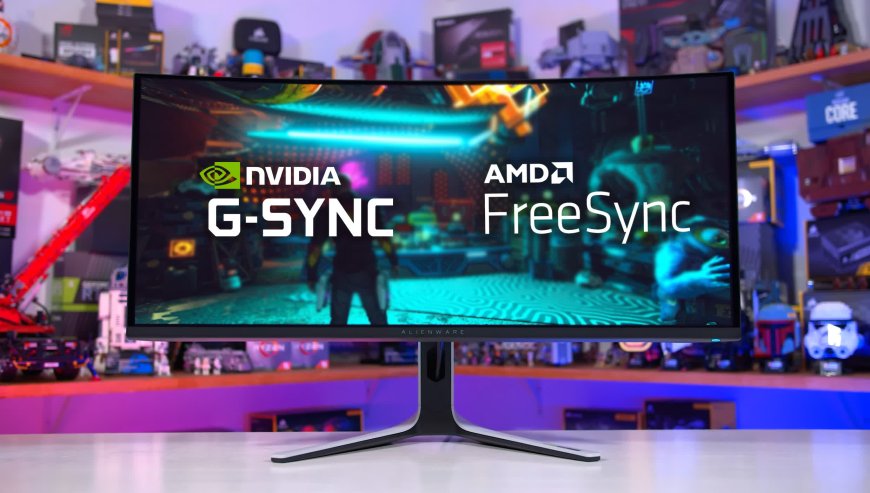Understanding Adaptive Sync: Nvidia G-Sync vs AMD FreeSync in 2023-2024
Adaptive sync, a vital feature in contemporary gaming monitors, synchronizes the display's refresh rate with the GPU's frame rate. This synchronization, also known as Variable Refresh Rate (VRR), enhances the gaming experience by eliminating screen tearing and reducing stutter and input lag.

The Evolution of Adaptive Sync: G-Sync and FreeSync
Originally, adaptive sync implementation varied significantly between Nvidia's G-Sync and AMD's FreeSync. Nvidia's G-Sync required proprietary hardware in both GPUs and monitors, while FreeSync was AMD's counterpart. However, the distinction between these technologies has diminished over time.
Current Scenario: Compatibility Across Brands
In the current market, the difference between FreeSync and G-Sync is primarily marketing-driven. Most modern FreeSync monitors are fully compatible with Nvidia GPUs, and vice versa. The technology's core function remains the same across both brands, ensuring a smooth gaming experience regardless of the specific adaptive sync technology.
Also Check Vastarmor launches Radeon RX 7700 XT
G-Sync Branding and Implementation
While Nvidia's G-Sync initially required specific hardware, the landscape has evolved. Today, Nvidia brands its adaptive sync implementation under the G-Sync name, despite the availability of more generic, industry-standard solutions that offer broad compatibility.
Enabling G-Sync on Non-G-Sync Branded Monitors
One notable difference between monitors branded with G-Sync and those without is the default settings. Monitors without G-Sync branding typically do not have adaptive sync enabled by default, but users can easily activate it in their settings.
Advantages of Adaptive Sync
Elimination of Screen Tearing
Adaptive sync prevents screen tearing by ensuring that each new frame rendered by the GPU is displayed in sync with the monitor's refresh cycle.
Reduction of Stutter and Judder
By aligning the monitor's refresh rate with the GPU's output, adaptive sync eliminates the need for frame duplication, thereby reducing stutter and judder in gameplay.
Lower Input Lag
Adaptive sync also reduces input lag by removing the need for the GPU to buffer frames, leading to more responsive gameplay.
Future of Adaptive Sync Technologies
As the gaming industry progresses, the role of adaptive sync technologies like G-Sync and FreeSync will continue to evolve. With the growing demand for high-refresh-rate monitors and the increasing power of GPUs, the importance of adaptive sync in providing a seamless gaming experience is more crucial than ever.
Conclusion: The Significance of Adaptive Sync in Modern Gaming
In conclusion, while the distinction between Nvidia's G-Sync and AMD's FreeSync has become less pronounced, the fundamental importance of adaptive sync technology in gaming remains unchanged. Whether you're using a G-Sync or FreeSync monitor, the ability to synchronize your display's refresh rate with your GPU's output is essential for a smooth, immersive gaming experience. As we move into 2023-2024, adaptive sync continues to be a key feature in the gaming monitor landscape, transcending brand boundaries and ensuring compatibility across different GPU manufacturers.


































